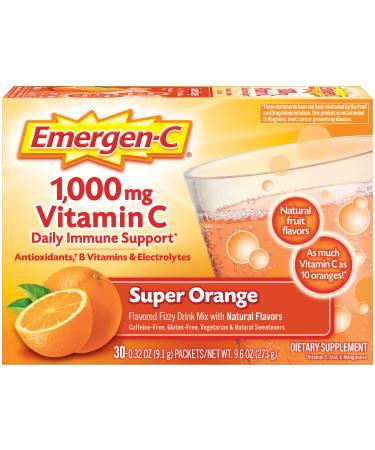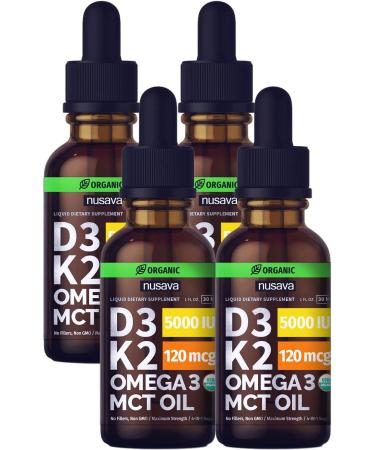In a study compared pharmacokinetic parameters of [6S]-5-MTHF and folic acid (FA) in women, the metabolism of [6S]-5-MTHF and FA was evaluated by measuring plasma folate derivatives. Twenty-four healthy females received a single oral dose of FA (400 mcg) and [6S]-5-MTHF (416 mcg) in a randomized crossover design. Plasma folate was measured up to 8 h after supplementation. Concentration-time-profile [area under the curve of the plasma folate concentration vs. time (AUC)], maximum concentration (Cmax)) and time-to-reach-maximum (tmax)) were calculated. AUC and Cmax) were significantly higher, and t(max) significantly shorter for [6S]-5-MTHF compared with FA. Plasma folate consisted essentially of 5-MTHF irrespective of the folate form given. Unmetabolized FA in plasma occurs regularly following FA supplementation, but rarely with [6S]-5-MTHF. These data suggest that [6S]-5-MTHF increases plasma folate more effectively than FA. The researchers concluded that the natural [6S]-5-MTHF form of folate could be an alternative to FA supplementation or fortification 1.
A similar study investigated the effect of supplementation with [6S]-5-MTHF compared to folic acid on red blood cell folate concentration, an indicator of folate status. The study was a double-blind, randomized, placebo-controlled intervention trial. Healthy women (n = 144) aged 19-33 yr received 400 mcg folic acid, 416 mcg [6S]-5-MTHF, 208 mcg [6S]-5-MTHF, or placebo daily for 24 wk. Red blood cell and plasma folate concentrations were measured at baseline and at 4-wk intervals. Red blood cell folate increased significantly more with 416 mcg [6S]-5-MTHF/day than with 400 mcg folic acid/d or 208 mcg [6S]-5-MTHF/day. The study shows [6S]-5-MTHF is more effective than folic acid at improving folate status. In addition, the study indicates the recommended period for preconceptional folic acid supplementation should be extended to >4 wk for healthy pregnancy, based on folate concentrations. The study concluded that [6S]-5-MTHF may be an efficient and safe alternative to folic acid 2.
A separate study tested the assumption that, in humans, folic acid is biotransformed (reduced and methylated) to 5-MTHF in the intestinal mucosa. Researchers conducted a crossover study in which they sampled portal and peripheral veins for folate concentrations after oral ingestion with folic acid or reduced folate 5-formyltetrahydrofolic acid (5-FormylTHF) in 6 subjects. Fifteen min after folic acid dose, 80 ± 12% of folate was unmodified folic acid. In contrast, after 5-FormylTHF dose, only 4 ± 18% of folate was unmodified 5-FormylTHF; the rest converted to 5-MTHF after 15 min. The researchers concluded the human gut converts reduced dietary folates to 5-MTHF efficiently but has limited ability to reduce folic acid. Therefore, large amounts of unmodified folic acid are probably attributable to extremely limited mucosal cell dihydrofolate reductase (DHFR) capacity, necessary for methylation to 5-MTHF. This suggests humans are reliant on the liver for folic acid reduction though it has low, and highly variable, DHFR activity. Therefore, chronic liver exposure to folic acid may induce saturation, which could explain systemic circulation of unmetabolized folic acid 3.
Another study analyzed long-term effects of fish oil (FO), 5-methyltetrahydrofolate (5-MTHF), or FO+5-MTHF prenatal supplementation on attention networks. Participants were 136 children born to mothers randomly assigned to receive FO and/or 5-MTHF or placebo prenatal supplementation, who were recalled for a new examination 8.5 yr later. Response conflict-resolution ability (using congruent and incongruent conditions), alerting, and spatial orienting of attention were evaluated with behavioral measures (Attention Network Test), electroencephalography/event-related potentials (ERPs), and standardized low-resolution brain electromagnetic tomography. The study concluded that folate supplementation during pregnancy improves children's ability to solve response conflicts. This advantage seems to be based on higher midcingulate cortex activation, indicating early nutrition influences functionality of specific brain areas involved in executive functions 4.
A similar study investigated whether prenatal maternal folate insufficiency, high total homocysteine levels and low vitamin B12 levels are associated with altered brain morphology, cognitive and/or psychological problems in school-age children. The study was embedded in a prospective population-based cohort study. The study included 256 children age 6-8 yr from whom MRI brain scans were collected. Mothers of 62 children had insufficient folate, resulting in lower performance on language and visuospatial domains for those children. The researchers concluded that folate insufficiency in early pregnancy has a long-lasting, global effect on brain development and is, together with homocysteine levels, associated with poorer cognitive performance 5.
A
elated study tested whether lower maternal plasma folate and vitamin B-12 and higher plasma homocysteine concentrations during pregnancy are associated with poorer neurodevelopment. 536 children (age 9-10 yr) underwent cognitive assessment during 2007-2008, using 3 Kaufman Assessment Battery tests, and additional tests measuring learning, long-term storage/retrieval, attention and concentration, and visuospatial and verbal abilities. Maternal folate, vitamin B-12, and homocysteine concentrations were measured at 30 +/- 2 wk gestation. Children's cognitive test scores increased 0.1-0.2 SD per SD increase across the entire range of maternal folate concentrations, with no apparent associations from deficiency. The researchers concluded higher maternal folate, but not vitamin B-12, concentrations during pregnancy predicted better childhood cognitive ability. They also determined, in terms of neurodevelopment, the concentration used to define folate deficiency may be set too low 6.
A prospective study hypothesized that a cyclic schedule (1 month of therapy followed by 2 months of withdrawal) of 5-methyltetrahydrofolate (5-MTHF) would reduce plasma levels of fasting total homocysteine (tHcy). All enrolled subjects received a cyclic 5-MTHF oral supplementation and were reevaluated after each treatment cycle for a total of 2 years. In the 246 enrolled subjects, a significant reduction of tHcy levels occurred after the first cycle of treatment and during the whole 2-year follow-up. The researchers concluded that their study clearly shows a cyclic schedule (1 month of therapy followed by 2 months of withdrawal) of 5-MTHF supplementation is able to significantly reduce tHcy levels in patients with mild to moderately elevated homocysteine levels 7.
A separate randomized, double-blind, placebo-controlled clinical trial was conducted among 81 obese women age 18-40 yr. Participants were randomly assigned to three groups receiving: (1) Folate-1: 1 mg/day folate supplements (n = 27); (2) Folate-5: 5 mg/day folate supplements (n = 27), and (3) placebo (n = 27) for 8 weeks. Fasting blood samples were taken at baseline and after 8 wk intervention. Folate supplementation (5 mg), compared with folate-1 and placebo, resulted in reduced plasma homocysteine, homeostasis model of assessment-insulin resistance score, and total cholesterol/HDL-C ratio. Furthermore, there was a significant difference in mean change of serum total cholesterol, LDL-, and non-HDL-cholesterol levels in the folate-5 group compared with folate-1 and placebo. The researchers concluded that 5 mg/day folate supplementation for 8 weeks had beneficial effects on metabolic profiles 8.
Another study attempted to determine whether folate supplementation improved arterial function in patients with reduced arterial blood flow. Individuals were randomly assigned to receive 400 mcg folic acid (45 patients) or 5-methyltetrahydrofolate (5-MTHF) (48) daily, or placebo (40) for 16 weeks. Primary endpoints were changes in plasma total homocysteine (tHcy), brachial pressure index in ankle (ABPI), and pulse wave velocity in ankle (APWV). Plasma tHcy was significantly reduced in folic acid and 5-MTHF groups compared with controls. ABPI improved significantly. Brachial-knee PWV (bk-PWV) decreased significantly in individuals receiving 5-MTHF and tended to be reduced in those taking folic acid compared with controls. The researchers concluded that folate reduced plasma homocysteine, and slightly improved ABPI and bk-PWV 9.
Other researchers examined the effect of oral treatment with 15 mg/daily of 5-methyltetrahydrofolate (5-MTHF) for 12 weeks, on homocysteinaemia and endothelial function in 19 patients undergoing peritoneal dialysis and compared them to a control group of patients on peritoneal dialysis. Endothelial function, flow-mediated dilation (FMD) and nitroglycerine-mediated dilation (NMD) were recorded. Oxidative stress was also assessed. Plasma homocysteine concentrations fell 30% after 5-MTHF oral treatment. Endothelial function improved significantly after oral 5-MTHF treatment, while the control group worsened. The researchers concluded that 5-MTHF improves endothelial dysfunction and that this effect appears to be independent of the reduction in homocysteine plasma levels 10.
A study aimed to determine if maternal folate, vitamin B12, vitamin B6 and homocysteine concentrations at 18-20 weeks gestation are associated with subsequent adverse pregnancy outcomes. A prospective observational study was conducted with 137 subjects at <20 weeks gestation. Clinical status, dietary information, circulating micronutrients and genome damage biomarkers were assessed at 18-20 weeks gestation. Women who developed intrauterine growth restriction (IUGR) had reduced red blood cell (RBC) folate and increased plasma homocysteine concentrations compared to controls. Maternal DNA damage was positively correlated with homocysteine. The study concluded that low maternal RBC folate and high homocysteine values in mid pregnancy are associated with subsequent reduced fetal growth 11.
A similar study evaluated the effect of high- and low-dose folic acid on homocysteine (Hcys) levels during first trimester of pregnancy and at delivery, and examined the association of Hcys serum levels and preeclampsia. In a single, blinded, randomized clinical trial, 246 pregnant women in 2 similar groups, received folic acid daily from early pregnancy until delivery (5 mg/day in group one and 0.5 mg/ day in group 2). The incidence of hypertension and laboratory changes in serum Hcys levels, lactate dehydrogenase, and uric acid in addition to levels of urine creatinine and protein were compared between groups. The results show that folic acid supplementation throughout pregnancy, irrespective of dosage, could eliminate hypertensive disorders, and decreases serum level of Hcys, although higher folic acid dose is more effective 12.
Another study aimed to prospectively assess change in depression severity and medication satisfaction in patients prescribed l-methylfolate (i.e., [(6S)-5-MTHF]. Between November 2010 and April 2012, patients who reported being treated for major depressive disorder rated their experiences before and after 3 months on l-methylfolate (7.5 mg or 15 mg). Survey questions included the 9-item Patient Health Questionnaire (PHQ-9), as well as quality of life and medication satisfaction questions. The primary outcome was change in depression severity from baseline to endpoint. Of 554 patients, 502 reported that l-methylfolate was added to their existing antidepressant and 52 were treated with l-methylfolate alone, without an antidepressant. Results show that patients managed with l-methylfolate achieved statistically significant improvements in self-reported depression symptoms and functioning and greater satisfaction with their medication treatment 13.
A similar study tested the hypothesis that mood, clinical manifestations and cognitive impairment of levodopa-treated) patients are associated with vitamin B12 and folate deficiency. This cross-sectional study measured serum folate and vitamin B12 blood levels in 111 PD patients. Levodopa-treated patients showed significantly lower serum levels of folate and vitamin B12 than controls, while depressed patients had significantly lower serum folate levels as compared to non-depressed. The study concluded that lower folate levels were associated with depression 14.
Safety:
Generally Recognized As Safe. (GRAS)
Scientific References:
1. Prinz-Langenohl R et al. 2009. [6S]-5-methyltetrahdrofolate increases plasma folate more effectively than folic acid in women with the homozygous or wild-type 677CT polymorphism of methylenetetrahydrofolate reductase. Br J Pharmacol Dec;158(8):2014-21.
2. Lamers Y et al. 2006. Red blood cell folate concentrations increase more after supplementation with [6S]-5-methyltetrahydrofolate than with folic acid in women of childbearing age. Am J Clin Nutr. Jul;84(1):156-61.
3. Patanwala et al. 2014. Folic acid handling by the human gut: implications for food fortification and supplementation. Am J Clin Nutr. Aug;100(2):593-9.
4. Catena, A et al. 2016. Folate and long-chain polyunsaturated fatty acid supplementation during pregnancy has long-term effects on the attention system of 8.5-y-old offspring: a randomized controlled trial. Am J Clin Nutr. Jan;103(1):115-27.
5. Ars CL et al. 2016. Prenatal folate, homocysteine and vitamin B12 levels and child brain volumes, cognitive development and psychological functioning: the Generation R Study. Br J Nutr. Jan 22:1-9.
6. Veena, SR et al. 2010. Higher maternal plasma folate but not vitamin B-12 concentrations during pregnancy are associated with better cognitive function scores in 9- 10-year-old children in South India. J Nutr. May:140(5):1014-22.
7. Ambrosino, P et al. 2015. Cyclic supplementation of 5-MTHF is effective for the correction of hyperhomocysteinemia. Nutr Res. Jun;35(6):489-95.
8. Asemi, Z et al. 2014. Metabolic response to folate supplementation in overweight women with polycystic ovary syndrome: a randomized double-blind placebo-controlled clinical trial. Mol Nutr Food Res. Jul;58(7):1465-73.
9. Khandanpour, N et al. 2009. Randomized clinical trial of folate supplementation in patients with peripheral arterial disease. Br J Surg Sep;96(9):990-8.
10. Baragetti, I et al. 2007. Improvement of endothelial function in uremic patients on peritoneal dialysis: a possible role for 5-MTHF administration. Nephrol Dial Transplant. Nov:22(11):3292-7.
11. Furness D et al. 2013. Folate, vitamin B12, vitamin B6 and homocysteine: impact on pregnancy outcome. Matern Child Nutr. Apr:9(2):155-66.
12. Manizheh, SM et al. 2009. Comparison study on the effect of prenatal administration of high dose and low dose folic acid. Saudi Med J. Jan;30(1):88-97.
13. Shelton, RC et al. 2013. Assessing Effects of l-Methylfolate in Depression Management: Results of a Real-World Patient Experience Trial. Prim Care Companion CNS Disord. 15(4).
14. Triantafyllou, NI et al. 2008. Folate and vitamin B12 levels in levodopa-treated Parkinson's disease patients: their relationship to clinical manifestations, mood and cognition. Parkinsonism Relat Disord. 14(4):321-5.




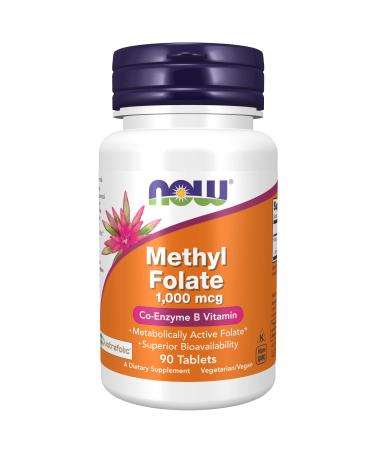

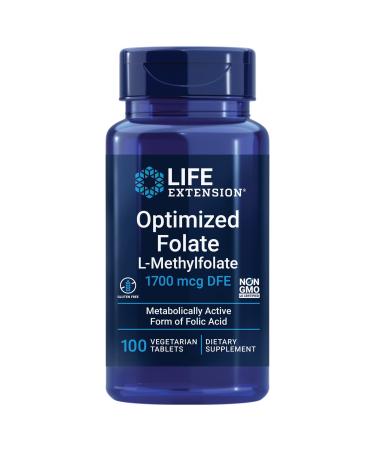

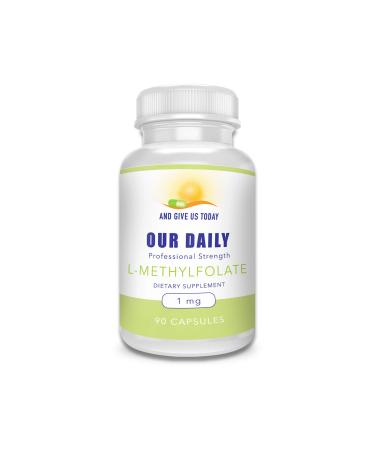


![Stewart Freeze Dried Dog Treats Made in USA [Single Ingredient Puppy and Dog Training Treats - Grain Free Natural Dog Treats] Resealable Tub to Preserve Freshness - Buy Online on GoSupps.com](https://www.gosupps.com/media/catalog/product/cache/25/small_image/375x450/9df78eab33525d08d6e5fb8d27136e95/6/1/61gwbbixarl._ac_sl1500_.jpg)
